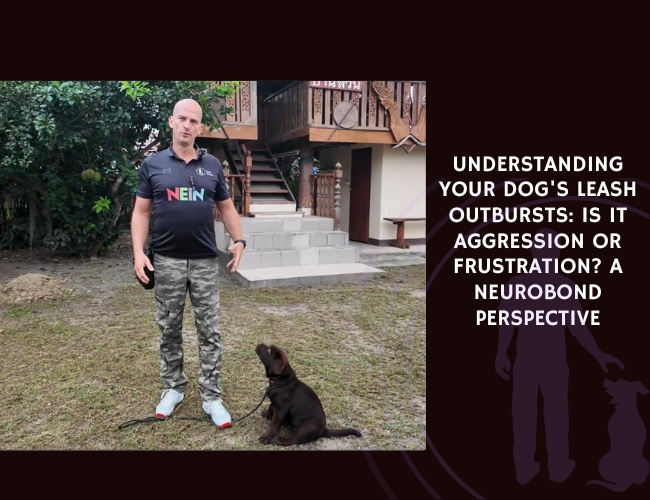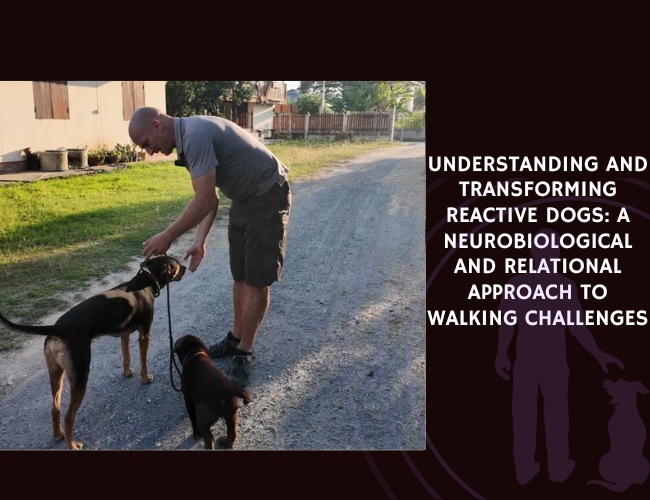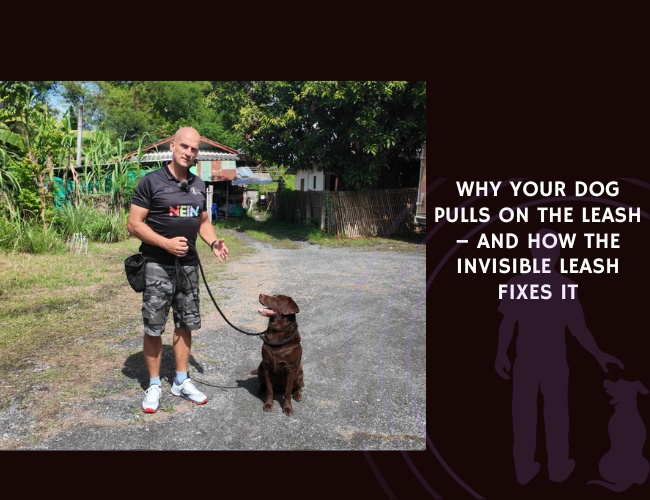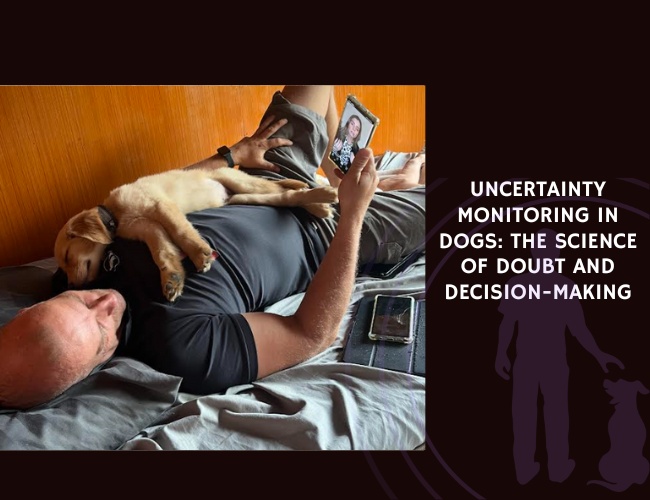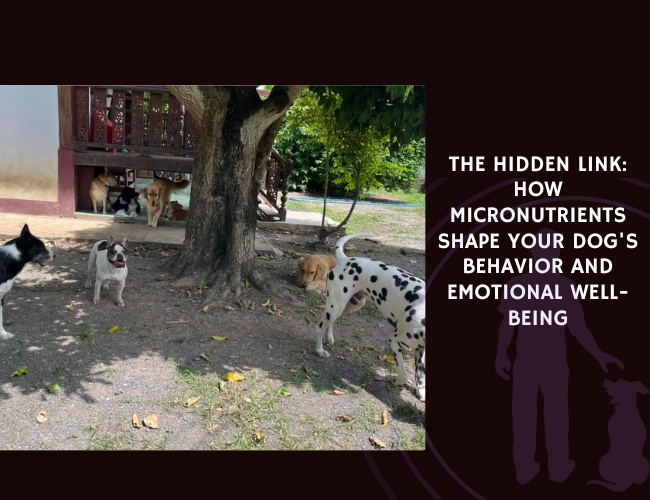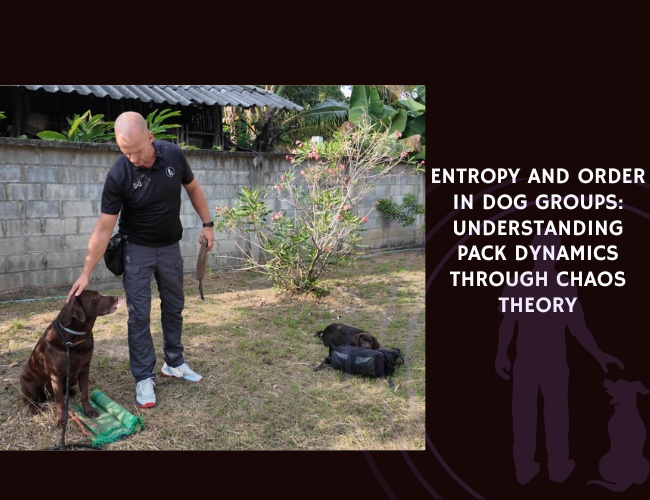Introduction: The Misunderstood Reactive Dog
Picture this: You’re walking your beloved companion when suddenly, they explode into a frenzy of barking and lunging at another dog across the street. Your heart races, other owners judge, and you wonder—is your furry friend aggressive? More often than not, what looks like aggression is actually something entirely different: frustration. Understanding this distinction isn’t just academic; it’s the key to transforming your walks from battlegrounds into bonding experiences.
The truth is, leash reactivity affects millions of dogs worldwide, yet we’ve been approaching it with a one-size-fits-all mentality that often misses the mark. When we mislabel frustration as aggression, we not only fail to address the real issue but potentially damage the precious bond between human and dog. This comprehensive guide will help you decode your dog’s emotional language, understand the neuroscience behind their reactions, and implement solutions that honor their natural instincts while building an invisible leash of trust.
Let’s explore how the NeuroBond philosophy—which emphasizes connection over control and views your dog as a complete emotional system—can revolutionize how we understand and address leash reactivity. 🐾
Character & Behavior: Understanding the Reactive Mind
The Emotional Spectrum of Leash Reactivity
Your dog’s outburst on leash isn’t random—it’s a complex emotional response rooted in either frustration or fear-based aggression, each with distinct neurological pathways. When we understand that dogs operate as complete emotional systems, processing their world through instinct and experience, we begin to see their reactions not as problems but as feedback about their internal state.
Frustration-driven reactivity emerges when your dog’s natural approach behaviors are thwarted. Imagine a child pressing their nose against a candy store window, unable to reach the treats inside—that’s your dog when they can’t greet that fascinating friend across the street. The dopamine pathways in their brain, designed for reward-seeking and social connection, fire intensely, creating an overflow of arousal that manifests as pulling, whining, and eventually, explosive barking.
Aggression-driven reactivity, conversely, stems from the amygdala’s threat detection system. Here, your dog perceives danger and responds with defensive behaviors aimed at creating distance. This isn’t your dog being “mean”—it’s their survival instinct kicking in when they feel trapped by the leash with no escape route. The cortisol surge accompanying this response tells us they’re experiencing genuine fear, not frustration.
Reading the Behavioral Blueprint
Did you know your dog’s body language provides a detailed map of their emotional state? Understanding these subtle differences helps us respond appropriately to their needs:
Frustration markers include:
- High-pitched, repetitive barking that sounds almost desperate
- Bouncy, forward-pulling body movements with play bows between outbursts
- Rapidly wagging tail held high, often with circular movements
- Soft, open mouth with tongue lolling when not vocalizing
- Eyes that dart between you and the desired target, seeking permission
Aggression markers reveal:
- Deep, sustained barking or growling from the chest
- Rigid body posture with weight shifted forward or backward
- Stiff tail held high or tucked, with minimal movement
- Hard stare with dilated pupils locked on target
- Raised hackles and closed, tense mouth with lips pulled back
These aren’t just behaviors—they’re your dog’s way of communicating their internal experience. When we learn to read this language, we can respond with empathy rather than correction.
Vocalization & Communication: How Your Dog ‘Talks’ Through Reactivity
The Symphony of Sounds
Your reactive dog isn’t just making noise—they’re speaking in a complex vocal language that reveals their emotional state. Research in canine ethology shows that dogs use distinct vocal patterns to communicate different messages, and understanding these nuances transforms how we interpret their outbursts.
Frustration vocalizations tend to be higher in pitch and more variable in tone. You might notice a progression from whining to yipping to rapid-fire barking, often interspersed with brief pauses where your dog looks at you as if saying, “Why won’t you let me say hello?” This vocal pattern mirrors what researchers observe in young mammals experiencing thwarted desires—it’s literally the sound of wanting something they can’t have.
Aggressive vocalizations carry a different acoustic signature entirely. The low-frequency rumble of a warning growl originates deep in the chest, designed by evolution to sound threatening. These sounds are more monotone and sustained, lacking the pitch variations of frustration. When your dog produces these sounds, they’re not asking for something—they’re demanding space.
The Escalation Timeline
Understanding how these vocalizations escalate helps us intervene before the situation spirals. In frustration cases, the pattern typically follows this trajectory:
- Initial excitement: Soft whimpering or squeaking upon spotting the stimulus
- Increasing arousal: Higher-pitched barking with pulling behavior
- Peak frustration: Explosive barking, jumping, spinning, or redirected nipping at the leash
- Recovery phase: Heavy panting and continued fixation on the now-distant stimulus
For aggression-driven reactions, the escalation looks markedly different:
- Freeze response: Silent stillness and intense focus
- Warning signals: Low growling, lip curling, or air snapping
- Active defense: Lunging with deep barking or attempting to bite
- Vigilance phase: Continued scanning for threats even after the trigger passes
By recognizing where your dog is on this timeline, you can implement appropriate interventions that address their specific emotional state rather than simply suppressing the behavior.
The Neuroscience Behind the Leash: What’s Happening in Your Dog’s Brain
Dopamine vs. Amygdala: Two Different Highways
When we view dogs as neurological systems responding to their environment, we understand that leash reactivity isn’t a choice—it’s a biological response. The frustrated dog operates primarily through dopamine pathways, the same circuits that drive play, exploration, and social bonding. These dogs aren’t trying to be difficult; their brains are literally flooded with “seeking” chemicals that demand satisfaction.
Research in comparative neuroscience reveals that when approach behaviors are blocked, dopamine levels initially spike, creating intense motivation to overcome the barrier. This is why frustrated dogs often show extinction bursts—temporary increases in the unwanted behavior when their usual strategies fail. Your dog’s brain is essentially saying, “If pulling a little doesn’t work, maybe pulling harder will!”
In contrast, the aggressive response originates in the amygdala, your dog’s alarm system. When this ancient brain structure identifies a threat, it bypasses rational thought and triggers immediate defensive action. The accompanying flood of stress hormones like cortisol and adrenaline prepares your dog for fight or flight—except the leash removes the flight option, leaving only fight.
Serotonin: The Missing Peace
Here’s something fascinating: dogs with chronic leash reactivity often show decreased serotonin levels, the neurotransmitter responsible for emotional regulation and impulse control. This isn’t just correlation—it’s causation. When serotonin is low, both frustration tolerance and threat threshold decrease, making dogs more likely to react explosively to stimuli that wouldn’t normally trigger them.
This neurochemical imbalance explains why some dogs seem to “lose it” over seemingly minor triggers. Their regulatory systems are compromised, turning molehills into mountains. The good news? Through proper bonding and trust-building—core principles of NeuroBond training—we can naturally support healthy serotonin production.
The Stress Cascade Effect
Chronic leash reactivity creates a vicious cycle in your dog’s nervous system. Each reactive episode triggers a stress response that can take hours or even days to fully resolve. During this recovery period, your dog’s reactivity threshold remains lowered, making them more likely to react to the next trigger.
This is why traditional punishment-based methods often backfire—they add stress to an already overwhelmed system. Instead of learning, the dog’s brain goes into survival mode, unable to form new positive associations. It’s like trying to teach someone mathematics while they’re having a panic attack—the learning centers of the brain simply aren’t accessible.
Environmental & Contextual Factors: The World Through Your Dog’s Eyes
Urban Jungle vs. Rural Retreat
Your environment profoundly shapes your dog’s reactive patterns. Urban dogs face what researchers call “stimulus stacking”—the overwhelming accumulation of triggers that would be manageable individually but become explosive in combination. That morning walk involves navigating past garbage trucks, skateboarders, other dogs, sirens, and countless moving targets, all while tethered by a leash that prevents natural coping behaviors.
Studies comparing urban and rural dog populations reveal striking differences. City dogs show 73% higher rates of frustration-based reactivity, likely due to the constant presence of inaccessible social opportunities. Every dog behind a fence, every pedestrian hurrying past, every squirrel in a tree becomes a source of thwarted desire. Rural dogs, with more opportunities for off-leash exploration and natural behavior expression, show lower overall reactivity but higher rates of true territorial aggression when it does occur.
The Leash as Amplifier
The leash itself fundamentally alters your dog’s psychology. In nature, dogs have what ethologists call the “critical distance”—the space they naturally maintain from perceived threats. The leash violates this instinct, forcing proximity while removing escape options. This creates what we call “barrier frustration,” where the very tool meant to keep your dog safe becomes a source of psychological stress.
Handler tension travels down the leash like an electrical current. When you tighten that leash in anticipation of a reaction, your dog feels your anxiety through the physical connection. This unconscious communication often triggers the very reaction you’re trying to prevent. Your stress becomes their stress, creating a feedback loop that amplifies reactivity.
The type of equipment matters too. Traditional collars create pressure on the throat during pulling, triggering oppositional reflexes that actually increase pulling behavior. Front-clip harnesses redirect this energy, while head halters provide gentle guidance—but only when introduced properly with positive associations.
Social History: The Missing Puzzle Piece
Dogs who missed critical socialization windows (between 3-14 weeks of age) often struggle with leash reactivity later in life. But here’s the key insight: it’s not just about the quantity of socialization, but the quality. A dog who learned to play off-leash with other dogs but never learned polite on-leash greetings faces a unique challenge—they know the joy of canine friendship but lack the skills to achieve it while restrained.
This explains why some friendly, social dogs become reactive on leash while being perfectly fine at dog parks. Their frustration stems from knowing what they’re missing, not from fear or aggression. These dogs need structured opportunities to learn that calm behavior on leash leads to rewards, not that all on-leash encounters are frustrating.

Training & Education: The NeuroBond Approach to Lasting Change
Building the Invisible Leash
The foundation of addressing leash reactivity isn’t teaching commands—it’s building trust. When we follow the NeuroBond principle of “connection over control,” we create what we call the invisible leash: a bond so strong that physical restraint becomes secondary to emotional connection.
This starts with allowing your dog to be themselves. Instead of suppressing their natural responses, we redirect them toward constructive outcomes. When your dog wants to approach another dog, we don’t punish the desire—we teach them that calm behavior creates opportunities for connection, while reactive behavior creates distance. This isn’t manipulation; it’s education through natural consequences.
The Check-In Ritual becomes your secret weapon:
- Start in low-distraction environments where success is guaranteed
- Reward every voluntary glance in your direction—no commands needed
- Gradually increase environmental complexity as the behavior strengthens
- Soon, checking in with you becomes your dog’s default response to stimuli
This isn’t obedience—it’s partnership. Your dog learns that you’re their resource for navigating challenging situations, not an obstacle to their desires. 🧠
Differential Diagnosis, Differential Solutions
Understanding whether you’re dealing with frustration or aggression completely changes your training approach. For frustration-driven dogs, the solution involves:
Controlled approach opportunities: Instead of always preventing interaction, we create structured scenarios where calm behavior leads to brief, positive greetings. This teaches the dog that patience, not pulling, achieves their social goals. Start with parallel walks at a distance, gradually decreasing space as both dogs remain calm.
The “Premack Principle”: We use the dog’s desire as the reward. Want to sniff that fascinating tree? First, offer calm attention to me. Want to greet that friend? Show me you can sit politely first. This transforms frustration into motivation for cooperation.
Redirection through engagement: Before your dog fixates on a trigger, engage their seeking system with alternative activities. Scatter feeding, “find it” games, or trick training during walks gives their dopamine pathways a productive outlet.
For aggression-driven reactivity, the approach differs significantly:
Distance is your friend: We work below the dog’s threshold, where they can observe triggers without feeling threatened. This might mean starting across a football field from other dogs, gradually decreasing distance over weeks or months as confidence builds.
Counterconditioning protocols: We change the emotional association with triggers from negative to positive. Every appearance of a trigger predicts wonderful things (special treats, play, praise) that only happen in that context. Over time, the trigger itself becomes a cue for positive expectations.
Agency and choice: Aggressive dogs often feel trapped. We give them options: “Would you like to move away? Would you like to sit behind me?” This sense of control reduces anxiety and builds trust that we’ll protect them from perceived threats.
The Power of Contextual Learning
Dogs don’t generalize well—what they learn in one context doesn’t automatically transfer to another. This is why your dog might be perfect in training class but reactive on walks. The NeuroBond approach addresses this through what we call “contextual scaffolding”:
- Foundation work at home: Build core behaviors in a safe, familiar environment
- Graduated exposure: Slowly introduce distractions while maintaining success
- Environmental variety: Practice in different locations, times, and weather conditions
- Real-world application: Use learned behaviors in naturally occurring situations
Remember: your dog is learning through lived experience, not theory. Every walk is a training session, every interaction a learning opportunity. The goal isn’t perfect behavior—it’s continuous improvement through consistent, compassionate guidance.
Management Tools & Techniques: Practical Solutions for Real-World Challenges
Equipment as Extension of Communication
The tools we use should facilitate communication, not force compliance. In the NeuroBond philosophy, equipment serves to enhance the connection between you and your dog, not replace it. Different types of reactivity benefit from different management approaches:
For frustration-reactive dogs:
- Front-clip harnesses naturally redirect forward momentum into turning toward you, making it easier for excited dogs to refocus
- Long lines (15-30 feet) in safe areas allow controlled freedom, reducing frustration while maintaining safety
- Treat pouches positioned strategically enable quick rewards for check-ins and calm behavior
For fear-aggressive dogs:
- Well-fitted Y-front harnesses distribute pressure evenly, avoiding throat constriction that can increase panic
- Double-ended leashes attached to both harness and collar provide security without harsh corrections
- Visual barriers like bandanas with “I need space” messages help prevent unwanted approaches
The key is introducing equipment gradually with positive associations. A harness shouldn’t just appear on walk day—it should predict wonderful experiences through careful conditioning.
Environmental Management Strategies
Sometimes the best training is avoiding the need for it. Strategic environmental management prevents reactive episodes while you work on long-term solutions:
Time your walks wisely: Early morning and late evening often offer quieter streets with fewer triggers. This isn’t avoidance—it’s setting your dog up for success while building positive walk associations.
Use distance strategically: Cross streets, step behind parked cars, or use natural barriers to create space from triggers. Your dog learns that you’ll protect them from overwhelming situations, building trust in your leadership.
Create “decompression walks”: Balance challenging urban walks with peaceful nature trails where your dog can explore freely (on a long line if necessary). These walks reset their stress levels and remind them that not every outing involves constant vigilance.
The Emergency U-Turn: Your Escape Route
Every reactive dog owner needs an emergency exit strategy. The U-turn isn’t failure—it’s smart management that prevents rehearsal of reactive behavior:
- See the trigger before your dog does (situational awareness is crucial)
- Use a cheerful voice: “Let’s go this way!” (not panicked or stern)
- Turn 180 degrees while encouraging your dog to follow
- Reward heavily once moving away from the trigger
- Find a calm spot to regroup before continuing
This isn’t about avoiding triggers forever—it’s about choosing when and how to engage with them based on your dog’s current capacity.
Breed-Specific Predispositions: Working With Your Dog’s Genetic Blueprint
Understanding Your Dog’s Inherited Tendencies
Your dog’s breed isn’t just about appearance—it’s a genetic blueprint that profoundly influences how they experience and respond to the world on leash. When we acknowledge these inherited tendencies rather than fighting them, we can predict whether your dog is more likely to experience frustration or aggression when reactive, and tailor our approach accordingly.
Think of breed traits as your dog’s factory settings—the default programs running in their operating system. The NeuroBond philosophy doesn’t seek to delete these programs but rather to redirect them toward constructive outcomes. Your herding dog will always have the impulse to control movement; your terrier will always have the drive to pursue. These aren’t flaws to fix but instincts to channel.
Herding breeds (Border Collies, Australian Shepherds, German Shepherds) were designed to control movement through space. When leashed, they experience profound frustration at their inability to manage the chaotic movement patterns around them. That lunging at bicycles? It’s not aggression—it’s a desperate attempt to make the world move “correctly.” These dogs show classic frustration markers: high-pitched barking, play bows between outbursts, and obsessive focus on moving targets.
Terrier breeds (Jack Russells, Bull Terriers, Scottish Terriers) carry centuries of breeding for independent pursuit and tenacious engagement. Their reactivity often starts as frustration—they want to investigate that fascinating dog—but can quickly escalate to aggression if challenged. They exhibit what researchers call “offensive aggression,” moving toward rather than away from perceived challenges. Their reactions are often explosive and seem disproportionate to the trigger.
Guardian Breeds vs. Companion Breeds
Livestock guardian breeds (Great Pyrenees, Anatolian Shepherds, Mastiffs) were bred for independent threat assessment and defensive action. Their reactivity typically stems from genuine defensive aggression, not frustration. They show classic distance-increasing behaviors: deep warning barks, still watchfulness that erupts into action, and positioning themselves between their human and perceived threats. These dogs aren’t trying to play or greet—they’re establishing perimeters.
Northern/Spitz breeds (Huskies, Malamutes, Shiba Inus) present unique challenges. Bred for endurance and independence, they often show frustration-based reactivity stemming from the leash itself rather than specific triggers. Their need for movement and exploration creates constant tension with leash restraint, resulting in redirected frustration that might look like aggression but is actually displaced energy.
Companion breeds (Cavalier King Charles Spaniels, Havanese, French Bulldogs) might seem unlikely candidates for reactivity, but their intense bonding with humans can create defensive reactions when they perceive threats to their person. This protective reactivity often surprises owners who expected only friendliness from these breeds.
Working With, Not Against, Breed Traits
Understanding your dog’s breed-specific predispositions transforms how we approach training. A Border Collie’s frustrated reactivity at moving objects requires different strategies than a Rottweiler’s defensive response to approaching strangers:
For motion-reactive herders, we provide alternative movement control opportunities. Teaching “watch” commands for passing bikes, structured heel work that satisfies their need for precise movement patterns, and herding-style games during calm moments redirects their instincts constructively.
For pursuit-driven terriers, we acknowledge their need for chase and capture. Controlled flirt pole sessions before walks, hidden toy searches during outings, and structured “hunt” games satisfy their seeking systems, reducing leash frustration.
For defensive guardians, we respect their protective instincts while building confidence. Creating clear boundaries they can patrol, establishing you as the decision-maker about threats, and reinforcing calm watchfulness over reactive defending honors their nature while maintaining safety. 🧠
Frustrated. Fearful. Misread.
Not all outbursts mean danger. Many leash explosions are frustration, not aggression—driven by blocked social instincts rather than true threat responses. Mislabeling them risks breaking trust.
Body language tells the truth. Bouncy pulls and desperate barks signal longing, while rigid stares and deep growls reveal fear. Each posture and sound is your dog’s emotional blueprint in motion.
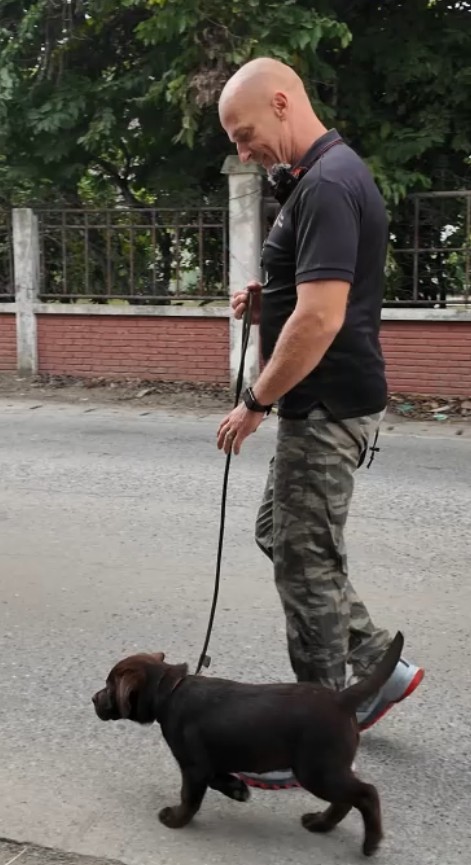
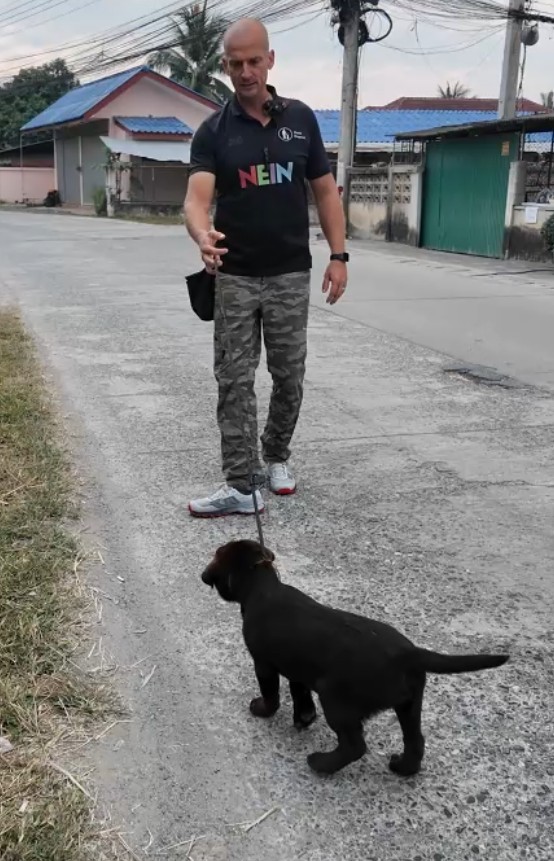
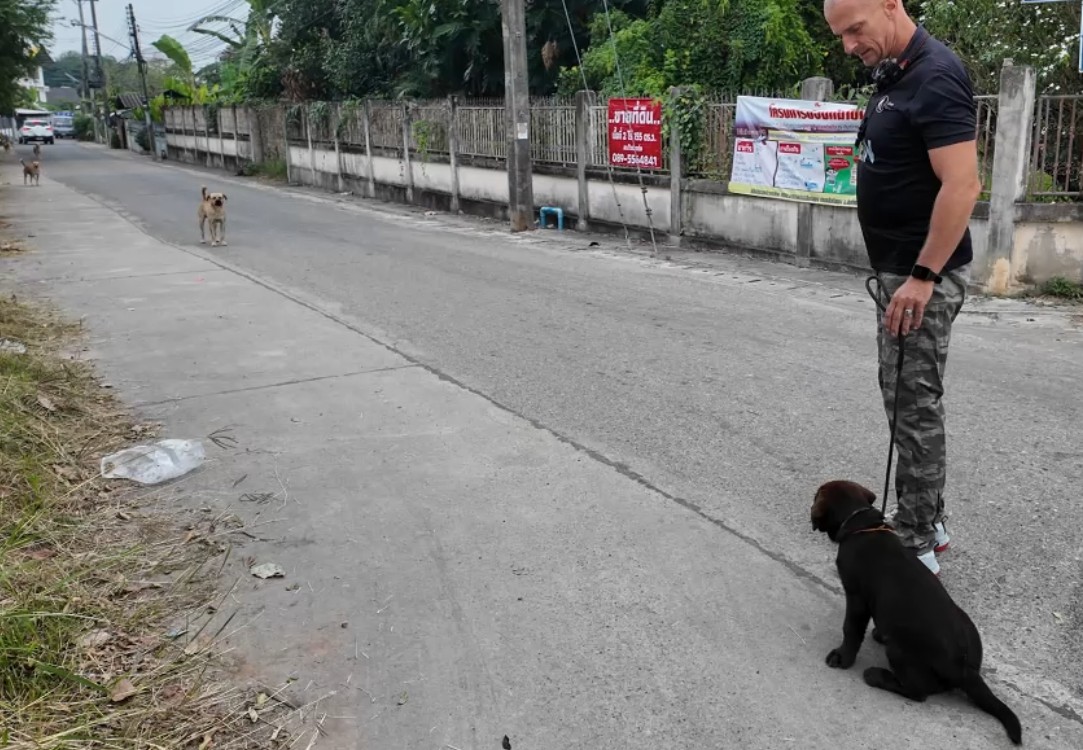
Connection reframes the leash. By honoring signals and addressing root emotions, the NeuroBond approach transforms chaos into communication. The invisible leash of trust replaces misinterpretation with clarity.
The Multi-Dog Household Dynamic: When Pack Psychology Meets Leash Reactivity
The Reactive Contagion Effect
Living with multiple dogs when one is reactive creates unique challenges that go beyond individual training. Dogs are social learners—they constantly observe and mirror each other’s emotional states and behavioral responses. When your reactive dog explodes at a passing trigger, your calm dog isn’t just watching; they’re learning, absorbing, and potentially adopting these patterns.
This “reactive contagion” follows predictable patterns. Initially, your non-reactive dog might simply become alert when their housemate reacts. Over time, they begin anticipating reactions, showing increased arousal before triggers even appear. Eventually, they may begin reacting themselves—not because they fear or want the trigger, but because they’ve learned this is how “we” respond to certain stimuli.
The stress cascade in multi-dog homes operates like this: Dog A sees trigger and reacts → Dog B startles at Dog A’s reaction → Both dogs’ stress hormones spike → Recovery time doubles → Next trigger encounters both dogs in elevated state → Reactions intensify. This cycle can transform a single dog’s manageable reactivity into household chaos.
Walking Strategies for Multiple Dogs
The NeuroBond approach to multi-dog walks prioritizes individual needs within pack dynamics. Trying to walk reactive and non-reactive dogs together often fails both—the reactive dog can’t focus on training, and the calm dog loses peaceful walk opportunities.
The Split and Rotate Method works best initially:
- Week 1-2: Walk dogs separately, focusing on individual training needs
- Week 3-4: Begin parallel walks with a helper, dogs on opposite sides of the street
- Week 5-6: Gradually decrease distance as both dogs remain calm
- Week 7-8: Practice brief together segments with immediate separation if either reacts
The Buddy System Approach leverages your calm dog’s influence:
- Position calm dog slightly ahead, creating a “follow the leader” dynamic
- Reactive dog learns to mirror calm dog’s behavior for rewards
- Use calm dog’s check-ins as cues for reactive dog to refocus
- Reward both dogs for collective calm behavior, building positive pack associations
For unavoidable joint walks, the Triangle Formation provides maximum control: Handler at the apex, dogs on either side with reactive dog furthest from typical trigger zones. This prevents direct competition for position and allows individual management of each dog’s needs.
Individual Plans Within Pack Harmony
Each dog needs their own training plan, but these plans must complement each other. While your reactive dog works on counterconditioning, your calm dog might practice being a “demo dog,” learning to remain neutral during their housemate’s training sessions.
Create separate but parallel training goals:
- Reactive dog: Focus on threshold distances and emotional regulation
- Calm dog: Build bombproof “settle” behaviors that resist contagion
- Together: Practice synchronized behaviors like group sits and collective check-ins
This isn’t about treating dogs identically—it’s about creating household harmony where each dog’s needs are met without sacrificing the others’. The invisible leash we build with each dog individually strengthens the pack’s collective bond.
Health Concerns: When Biology Drives Behavior
The Hidden Medical Factors
Before addressing behavioral aspects, we must acknowledge that some leash reactivity has medical roots. Pain, sensory changes, and hormonal imbalances can all manifest as increased reactivity. A dog suffering from hip dysplasia might react aggressively to approaching dogs not from fear, but from anticipating the pain of being bumped or pulled.
Common medical contributors include:
- Thyroid imbalances: Both hypo- and hyperthyroidism affect emotional regulation
- Chronic pain conditions: Arthritis, dental disease, or ear infections lower tolerance
- Vision or hearing changes: Inability to properly assess approaching stimuli increases anxiety
- Gastrointestinal issues: Chronic discomfort affects overall stress levels
- Neurological conditions: Some seizure disorders first manifest as behavioral changes
If your previously calm dog suddenly develops reactivity, or if training isn’t progressing despite consistent effort, a thorough veterinary examination including blood work is essential. You can’t train away pain or hormone imbalances.
The Gut-Brain Connection
Emerging research reveals fascinating connections between digestive health and behavior. The gut produces 90% of the body’s serotonin, that crucial neurotransmitter for emotional regulation. Dogs with chronic digestive issues often show increased anxiety and reactivity, while improving gut health through appropriate nutrition can significantly impact behavior.
This doesn’t mean every reactive dog needs probiotics, but it highlights how behavior exists within a complex biological system. The NeuroBond philosophy of viewing dogs as complete systems, not just behavior problems, aligns perfectly with this holistic understanding. 🧡
Stress, Cortisol, and Recovery
Chronic stress from repeated reactive episodes creates a state of hypervigilance that affects your dog’s entire body. Elevated cortisol levels suppress immune function, impair digestion, and interfere with learning. This biological stress response explains why reactive dogs often develop secondary issues like skin problems, digestive upset, or increased susceptibility to illness.
Recovery from a reactive episode isn’t instantaneous. Research shows cortisol levels can remain elevated for 72 hours after a stressful event. This means if your dog has reactive episodes on daily walks, they never fully recover between triggers, living in a constant state of physiological stress.
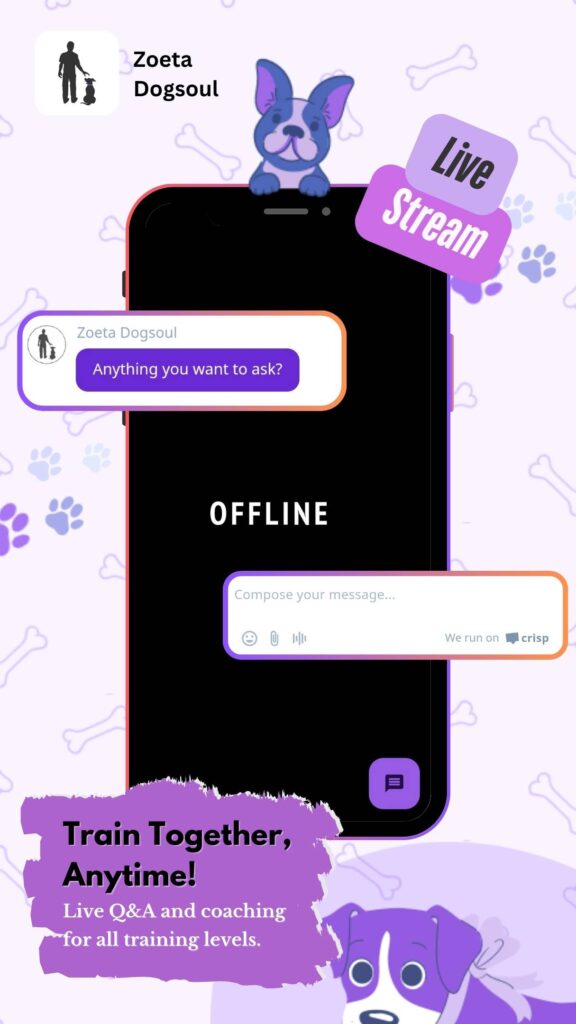
Video Analysis and Self-Assessment Tools: Becoming Your Dog’s Behavioral Detective
The Power of Objective Observation
You might think you know exactly what happens when your dog reacts, but video analysis reveals a different story. Our stressed human brains miss crucial details in the heat of the moment—subtle warning signs, environmental triggers, and recovery patterns that hold the key to understanding your dog’s emotional state.
Setting up for video success requires minimal equipment but thoughtful preparation. Use your phone in landscape mode, positioned where you can capture your dog’s full body and the approaching trigger. If possible, have a helper film while you handle your dog normally. The goal isn’t perfect cinematography—it’s capturing authentic behavior for analysis.
Your Frame-by-Frame Breakdown Guide
When reviewing footage, watch each reactive episode at least three times:
First viewing – The Overview: Watch at normal speed, noting:
- Total duration from first alert to full recovery
- Number of vocalizations and their type
- Distance from trigger at reaction start
- Your own body language and leash tension
Second viewing – The Build-up (slow motion): Focus on the 10 seconds before reaction:
- Ear position changes (forward alert vs. backward anxiety)
- Tail movements (speed, height, stiffness)
- Body weight shifts (forward lean vs. backward crouch)
- Breathing changes (stopped breathing, rapid panting)
- Last moment of possible intervention before explosion
Third viewing – The Recovery (normal speed): Analyze post-reaction:
- Time to first check-in with handler
- Continued scanning vs. moving on
- Stress signals (lip licking, yawning, shaking off)
- Whether dog can take treats and at what point
- Your emotional recovery and its impact on your dog
The Self-Assessment Questionnaire
Use this questionnaire after reviewing video to determine frustration vs. aggression patterns:
Frustration Indicators (Score 1 point each):
- Dog initially tried to approach the trigger
- Vocalizations are high-pitched or variable
- Body movements are bouncy or play-like between barks
- Dog looks at you frequently during reaction
- Tail wags rapidly, even while barking
- Dog can redirect to treats within 30 seconds
- Reactions worse when trigger is moving away
- Dog shows play bows or jumping during episodes
Aggression Indicators (Score 1 point each):
- Dog immediately tried to increase distance
- Vocalizations are low, sustained growls or barks
- Body is stiff and still between lunges
- Dog maintains fixed stare on trigger
- Tail is rigid (high or tucked)
- Dog refuses treats for several minutes
- Reactions worse when trigger approaches
- Dog shows teeth, hackles, or freeze behaviors
Scores of 5+ in either category suggest primary emotional driver. Mixed scores indicate complex reactions requiring professional assessment.
Warning Signs You’re Missing
Video analysis reveals these commonly overlooked pre-reaction signals that occur 3-10 seconds before explosion:
The “Stillness Before the Storm”: Your normally busy dog suddenly stops all movement, even breathing. This freeze response indicates decision-making—intervention here prevents escalation.
The “Whale Eye”: Dog’s head faces forward but eyes strain sideways to watch trigger. This conflict between approach and avoidance signals internal struggle.
The “Displacement Sniff”: Sudden, intense ground sniffing when trigger appears isn’t distraction—it’s stress displacement. Your dog is trying to self-soothe.
The “Shake Off Without Water”: That full-body shake when dry indicates stress release. Multiple shakes suggest accumulating tension.
The “Check-Out”: Your usually attentive dog suddenly can’t hear you or take treats. Their nervous system has shifted to survival mode before any visible reaction.
Recognizing these moments gives you a 3-10 second intervention window—enough time to implement your U-turn, scatter treats, or engage alternative behaviors before the explosion. 📹
The Human Factor: Owner Reactivity Patterns
Your Nervous System Meets Theirs
Here’s an uncomfortable truth: you might be reactive too. Not in the lunging-barking sense, but in the anticipatory tension, rapid heartbeat, and fight-or-flight response you experience when spotting potential triggers. Your dog feels every bit of this through the leash, creating a feedback loop where your anxiety predicts and potentially triggers their reaction.
Owner reactivity patterns often stem from past experiences—maybe your dog’s first reaction scared you, or previous dogs had similar issues. Now your body automatically tenses when you see another dog approaching. Your breathing becomes shallow, your grip tightens, and you unconsciously shorten the leash. You’ve become reactive to the possibility of reactivity, creating a self-fulfilling prophecy.
The Pre-Walk Anxiety Spiral affects countless owners:
- Anxiety builds before even leaving the house
- Scanning constantly for triggers creates hypervigilance
- Tension travels down the leash like an electric current
- Dog senses owner’s stress and becomes alert
- Both are primed for reaction before any trigger appears
This isn’t your fault—it’s a natural protective response. But understanding it empowers change.
Breaking Your Conditioned Responses
The NeuroBond philosophy applies to humans too: we need to build new neural pathways that support calm leadership rather than anxious management. This starts with body awareness and breathing:
The 4-7-8 Breathing Reset (use when you spot a trigger):
- Inhale through nose for 4 counts
- Hold breath for 7 counts
- Exhale through mouth for 8 counts
- This activates your parasympathetic nervous system, sending calm signals to your dog
The Soft Body Scan (practice throughout walks):
- Consciously relax shoulders away from ears
- Soften your jaw and unfurrow your brow
- Keep elbows bent and loose, avoiding rigid arm positions
- Maintain soft knees, never locked
- Your relaxed body tells your dog “no danger here”
The Mindful Check-In (every 30 seconds initially):
- Notice your breathing without changing it
- Observe your grip pressure on the leash
- Feel your feet connecting with the ground
- This present-moment awareness prevents anxiety spirals
Building Handler Confidence Through Small Wins
Confidence isn’t built through perfect walks—it grows through successfully managing imperfect moments. The NeuroBond approach celebrates micro-victories that rebuild your trust in yourself and your dog:
Redefine success: Instead of “no reactions,” celebrate “recovered quickly” or “saw trigger first” or “kept breathing.” These small wins are building blocks of confidence.
The Victory Journal: Each evening, write three tiny successes from your walk. Maybe you spotted a trigger before your dog, or remembered to breathe, or managed a smooth U-turn. This rewires your brain to notice progress over problems.
Graduated challenges: Start walks in easiest environments at quietest times. Success builds success. As confidence grows, gradually add complexity. You’re training yourself just as much as your dog.
Remember: your dog needs you to be their calm anchor, not their anxious guardian. When you trust the process and release the need for perfection, you model the emotional regulation you want to see in your dog. 🧡
Seasonal and Weather Influences: Nature’s Hidden Impact on Reactivity
The Barometric Pressure Connection
Did you know your dog might react more on days when storms are approaching? Barometric pressure changes affect dogs profoundly, often triggering increased reactivity hours before visible weather changes. Dogs sense these pressure drops through their inner ears and sinuses, creating a feeling similar to what humans experience during altitude changes—uncomfortable and anxiety-provoking.
Low pressure systems correlate with increased reactive incidents. Your typically manageable dog might suddenly seem more on edge, reacting to triggers they normally ignore. This isn’t regression—it’s biology. Their nervous system is already slightly activated by the atmospheric changes, lowering their threshold for additional stressors.
Weather-aware management strategies:
- Check weather forecasts and plan easier routes on low-pressure days
- Reduce walk duration but increase frequency during weather transitions
- Provide extra calming activities (snuffling, licking) before walks
- Accept that some days require management over training
Seasonal Hormonal Shifts
Spring and fall bring hormonal changes that significantly impact reactivity. Spring’s increasing daylight triggers reproductive hormones, even in altered dogs. You might notice increased frustration-based reactivity as social motivation intensifies. Dogs pull harder toward others, vocalize more intensely, and show decreased impulse control.
Fall brings different challenges. Decreasing daylight affects serotonin production, potentially increasing anxiety and defensive behaviors. Combined with increased wildlife activity preparing for winter, fall often sees spikes in both predatory frustration and fear-based reactions.
Winter’s unique challenges include:
- Reduced exercise opportunities increasing frustration
- Salt and ice creating paw discomfort that lowers tolerance
- Heavy clothing and equipment making owner body language harder to read
- Shorter daylight hours limiting training windows
- Increased on-leash time due to weather constraints
Summer considerations involve:
- Heat stress lowering reactivity thresholds significantly
- Increased outdoor activity meaning more triggers
- Dehydration affecting cognitive function and impulse control
- Hot pavement creating physical discomfort that amplifies reactions
Creating Weather-Adapted Training Plans
The NeuroBond approach adapts to nature’s rhythms rather than fighting them. Your training plan should flex with the seasons:
Storm Season Protocol:
- Indoor training games that tire mentally without outdoor exposure
- Desensitization to storm sounds during calm weather
- Extra bonding activities that build security
- Management-focused walks with celebration of small successes
High Trigger Season Strategies (spring/summer):
- Dawn and dusk walks when temperatures and traffic are lower
- Focus on impulse control games during peak frustration periods
- Increase structured activities that satisfy social needs safely
- Use long lines in safe areas for freedom without close encounters
The Firework and Holiday Challenge: Firework seasons and holidays create perfect storms for reactivity—increased anxiety from noise, disrupted routines, and more triggers outdoors. Prepare through:
- Gradual sound desensitization starting months before
- Creating safe indoor spaces for decompression
- Adjusting walk schedules to avoid peak celebration times
- Using management tools (thunder shirts, calming supplements) preventively
Remember: working with seasonal patterns rather than against them honors your dog’s biological reality. Some days, success means simply maintaining previous progress rather than making new gains. The invisible leash strengthens through consistent connection, not perfect conditions.
Lifestyle & Environment: Creating a Calm Life
The Reactive Dog’s Daily Rhythm
Structure provides security for reactive dogs. When they know what to expect, their baseline stress decreases, improving their capacity to handle triggers. The NeuroBond approach emphasizes creating predictable routines that support emotional regulation:
Morning rituals set the day’s tone. Instead of rushing straight into a walk, spend 10 minutes on calm activities like gentle grooming or stationary training. This activates their thinking brain before entering potentially triggering environments.
Decompression time between activities prevents stress accumulation. After a challenging walk, provide 30-60 minutes of quiet time before the next activity. This isn’t isolation—stay nearby, offering calm presence without demands.
Evening wind-down supports quality sleep, essential for emotional regulation. Reduce stimulation in the hours before bedtime through calming activities like lick mats, gentle massage, or quiet companionship.
Enrichment Without Overwhelm
Reactive dogs need mental stimulation, but traditional “enrichment” can sometimes increase arousal rather than satisfy it. The key is choosing activities that engage without overwhelming:
Sniffing activities activate the seeking system in a controlled way. Scatter feeding in grass, snuffle mats, or “find it” games provide dopamine rewards without social frustration. These activities naturally lower heart rate and promote calm focus.
Problem-solving toys should be challenging but not frustrating. Start with easy puzzles and gradually increase difficulty as your dog’s frustration tolerance improves. Success builds confidence; repeated failure increases stress.
Calm training sessions using the NeuroBond principle of letting the dog find solutions builds both mental engagement and emotional regulation. Instead of rapid-fire commands, present problems and wait for your dog to offer solutions, rewarding their thinking process, not just correct answers.
The Social Life of a Reactive Dog
Reactive dogs aren’t doomed to isolation. With thoughtful management, they can maintain fulfilling social lives that meet their needs without triggering reactions:
Parallel walks with calm, known dogs provide social contact without direct interaction. Walking side by side at comfortable distances allows social bonding through shared activity rather than face-to-face greetings.
Structured playdates in controlled environments can work for frustration-reactive dogs. Start with brief sessions in neutral, enclosed spaces with one carefully selected friend. Success builds positive associations with controlled social interactions.
Human social time matters too. Reactive dogs often bond intensely with their families. Quality time together—training, grooming, quiet companionship—fulfills social needs and strengthens the invisible leash that makes management easier.
Senior Care: When Aging Changes the Game
The Aging Reactive Dog
As dogs age, their reactivity patterns often shift. Some become less reactive as energy decreases and confidence grows. Others develop new reactive behaviors as sensory changes and cognitive decline affect their ability to process their environment. Understanding these changes helps us adapt our approach to support our senior companions.
Sensory decline significantly impacts reactive behavior. A dog losing hearing might startle more easily when surprised by approaches they didn’t hear coming. Vision loss makes it harder to read other dogs’ body language, increasing anxiety about interactions. These aren’t training issues—they’re accessibility needs requiring environmental modifications.
Cognitive changes can manifest as increased anxiety or confusion. Canine cognitive dysfunction (similar to dementia) affects up to 68% of dogs over 15 years old. These dogs might react to familiar stimuli as if encountering them for the first time, or show increased irritability due to confusion and disorientation.
Pain and reactivity become increasingly intertwined in senior dogs. Arthritis affects 80% of dogs over 8 years old, and anticipating pain from boisterous greetings might cause previously social dogs to become defensively reactive. This isn’t personality change—it’s self-protection.
Adapting the NeuroBond Approach for Seniors
The principles of connection over control become even more crucial with senior dogs. They’ve spent a lifetime learning and adapting; now they need our support to navigate their changing capabilities:
Shorter, more frequent outings prevent both physical and mental exhaustion. Three 10-minute walks often work better than one 30-minute walk, maintaining routine without overwhelming aging bodies and minds.
Environmental predictability becomes increasingly important. Familiar routes with known triggers allow you to anticipate and manage situations before they escalate. Novel environments can be overwhelming for dogs with cognitive decline.
Gentle redirection replaces active training. Senior dogs have established patterns that won’t change dramatically. Focus on management and comfort rather than behavior modification. The invisible leash built over years of bonding becomes your primary tool.
The Owner’s Journey: From Frustration to Understanding
Emotional Impact on Humans
Living with a reactive dog affects owners profoundly. The embarrassment of public outbursts, the stress of constant vigilance, and the grief over lost “normal” dog experiences take a toll. Research shows that owners of reactive dogs experience significantly higher stress levels and report feeling isolated from the dog community.
You’re not alone in feeling frustrated when your training efforts seem to fail, or guilty when you avoid walks to prevent reactions. These feelings are valid and shared by thousands of owners worldwide. The journey from seeing your dog as a problem to understanding them as a complex emotional being responding to their world is transformative—for both of you.
The Mislabeling Trap
When owners misinterpret frustration as aggression, cascading consequences follow. Harsh training methods might suppress behaviors temporarily but increase underlying stress. Aversive tools like shock collars or prong collars might stop the lunging but don’t address the emotional state driving it. Worse, they can create learned helplessness, where dogs shut down rather than learn.
This misunderstanding leads to tragic outcomes. Shelters report that “aggression” is the primary reason for surrender, yet behavioral assessments often reveal these dogs aren’t truly aggressive—they’re frustrated, anxious, or poorly understood. Clear diagnosis could save countless dogs from unnecessary rehoming or euthanasia.
Building Your Support Network
Managing a reactive dog shouldn’t be a solitary journey. Building a support network improves outcomes for both dogs and owners:
Find force-free trainers who understand the distinction between frustration and aggression. Look for certifications like CCPDT or IAABC that indicate evidence-based approaches aligned with modern behavioral science.
Connect with other reactive dog owners through online forums or local support groups. Sharing experiences reduces isolation and provides practical tips from those who truly understand the challenge.
Educate your community about reactive dogs’ needs. Simple actions like crossing streets when you see someone struggling with a reactive dog, or teaching children not to approach without permission, create a more supportive environment for all dogs.
Conclusion: Is This Approach Right for Your Dog?
Recognizing Success Markers
How do you know if distinguishing between frustration and aggression is helping your dog? Success isn’t measured in perfect walks but in small, consistent improvements that indicate emotional change:
- Your dog checks in with you more frequently without prompting
- Recovery time after reactions decreases from hours to minutes
- The distance needed from triggers for calm behavior gradually decreases
- Your dog offers alternative behaviors (sit, focus, turn away) when seeing triggers
- Overall stress indicators (panting, scanning, pulling) reduce even when not actively reacting
These changes might seem subtle, but they represent fundamental shifts in your dog’s emotional processing. You’re not just managing behavior—you’re healing the underlying emotional dysregulation.
When Professional Help is Essential
While understanding frustration versus aggression empowers owners, some situations require professional intervention:
- If reactions escalate despite consistent training
- When human or animal safety is at risk
- If you’re feeling overwhelmed or considering rehoming
- When medical factors might be contributing
- If your dog’s quality of life is significantly impacted
A qualified behavioral consultant can provide personalized assessment and intervention plans that consider your specific situation, your dog’s individual needs, and your family’s lifestyle.
The Journey Forward
Living with a reactive dog transforms you. You become an expert in canine body language, a master of environmental management, and an advocate for misunderstood dogs. Through the NeuroBond approach—seeing your dog as a complete system, prioritizing connection over control, and allowing them to find solutions through their own instincts—you’re not just training a dog. You’re building a relationship based on mutual trust and understanding.
Remember: your dog’s reactivity is feedback, not failure. Every outburst tells you something about their internal state, their needs, or their limitations. When we stop trying to suppress these communications and start listening to them, we open the door to genuine transformation.
The path from reactive to relaxed isn’t linear. You’ll have breakthrough days followed by setbacks, moments of pure joy interrupted by public embarrassments. But with each check-in, each successful U-turn, each calm pass of a trigger, you’re building that invisible leash—the unbreakable bond that transcends physical restraint.
Your reactive dog isn’t broken. They’re not aggressive by nature or doomed to a life of isolation. They’re a sensitive, complex being navigating a challenging world with the tools they have. By understanding whether they’re driven by frustration or fear, you become their translator, their advocate, and their safe harbor in a stimulating world.
The journey isn’t easy, but it’s profoundly rewarding. Every reactive dog owner who’s reached the other side will tell you the same thing: the dog who emerges from this process—calmer, more connected, more trusting—is worth every moment of effort. And the person you become through loving and understanding them? That transformation is just as profound. 🐾
Your Next Steps
Start tomorrow’s walk with fresh eyes. Instead of bracing for reactions, observe the subtle signals preceding them. Is your dog seeking connection or creating distance? Are they frustrated or fearful? This single shift in perspective—from judging to understanding—begins your transformation journey.
Trust the process. Trust your dog. Most importantly, trust the bond you’re building together. The invisible leash isn’t just a training goal—it’s a philosophy of partnership that honors both your needs and creates a life worth living, together.

